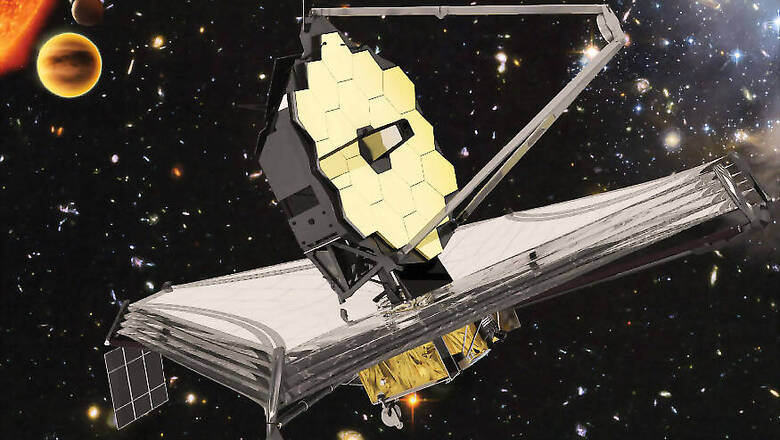
views
After over a decade of delay, the much awaited James Webb Space Telescope (JWST) is set to launch in exactly one year's time. The iconic space telescope has been in the making since the '90s, and now, is anticipated to finally take off for its orbital position above Earth on March 30, 2021. Also known colloquially as 'Webb', the incredibly adventurous telescope will replace the iconic Hubble Space Telescope, and serve a key objective of studying distant exoplanets, as well as observing the universe's very first galaxies, as mankind attempts to get a better understanding of the mysteries of the deep void.
The near-infrared and spectrograph telescope is designed to gaze deep into space, and intercept light rays of a varying range of spectrum coming from galaxies far, far away. JWST will be able to absorb more incident light than Hubble, which automatically increases its ability to gaze farther into space. As a result, JWST's key ability will be to observe galactic bodies from the very early years of the universe, which will not just be a first for mankind, but also help us in understanding aspects of the early universe that is still an alien concept to us.
To make such observations, JWST will be hosted at Lagrange Point L2, which is one of the five identified points up in space, which fall within NASA's Deep Space Network that helps relay information between Earth and our own space equipment. The prospect that is represented by the James Webb telescope is also amplified by its ability to observe distant stars, and in turn, observe the compositions of faraway solar systems. Through this process, this will contribute significantly towards identifying potentially habitable exoplanets that fall within the habitable 'Goldilocks' zone of solar systems, and in turn, find more planets that may be able to sustain life.
As a result, the advent of JWST has scientists excited at the prospect that it represents. Two of our primary objectives in space missions have been to understand the origin of the universe, and find out if life exists, in forms known and unknown, in other worlds. However, the prospect of yet another delay does loom large in front of the James Webb project. The launch of the satellite has been pending since around 2007, and the coronavirus pandemic has meant that the already 13-year delay may be compounded even further.
With NASA already speaking of a potential delay in its Artemis manned lunar missions, it is likely that even the launch of the James Webb Space Telescope eventually ends up facing yet another setback. Only time will tell.

















Comments
0 comment